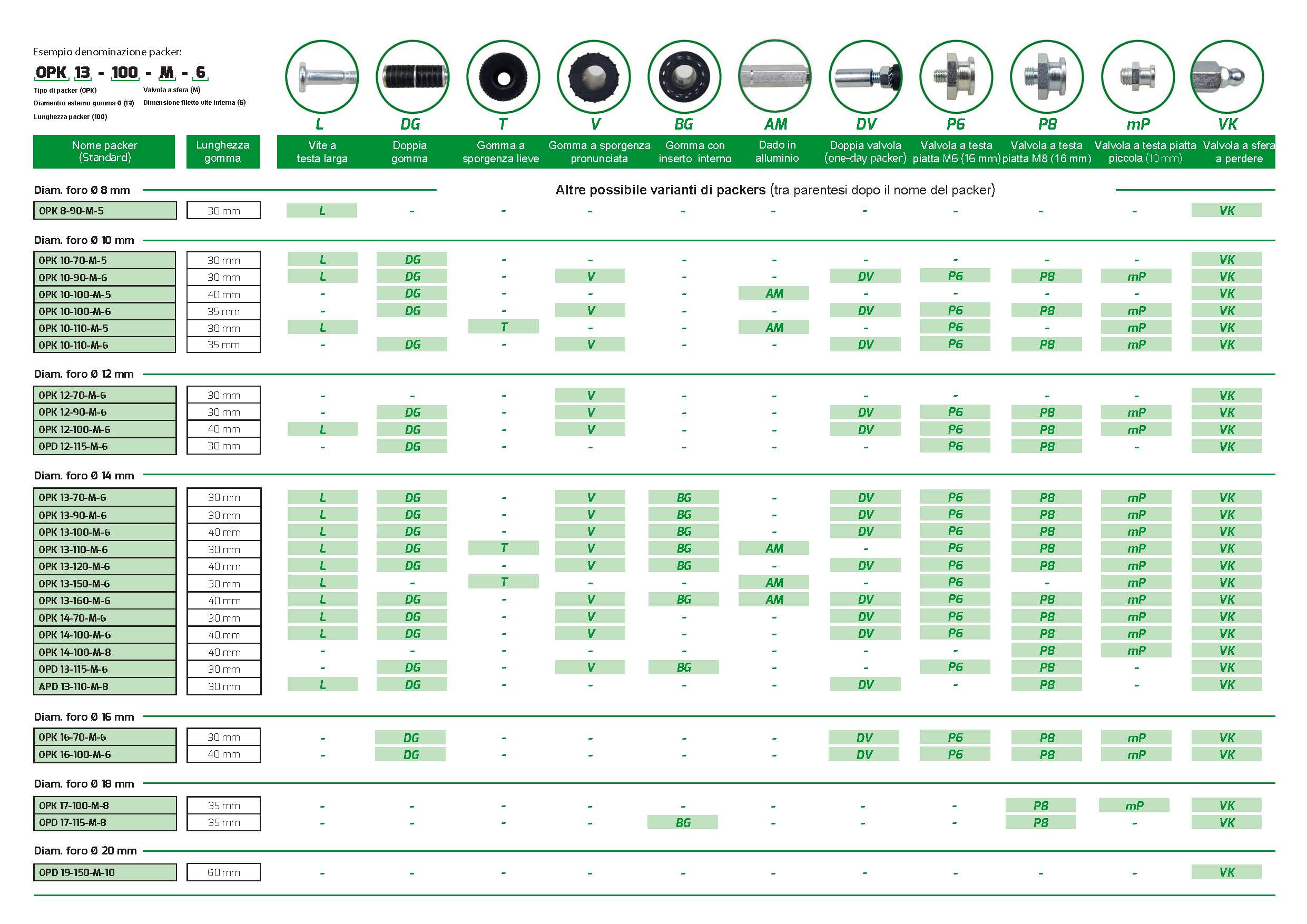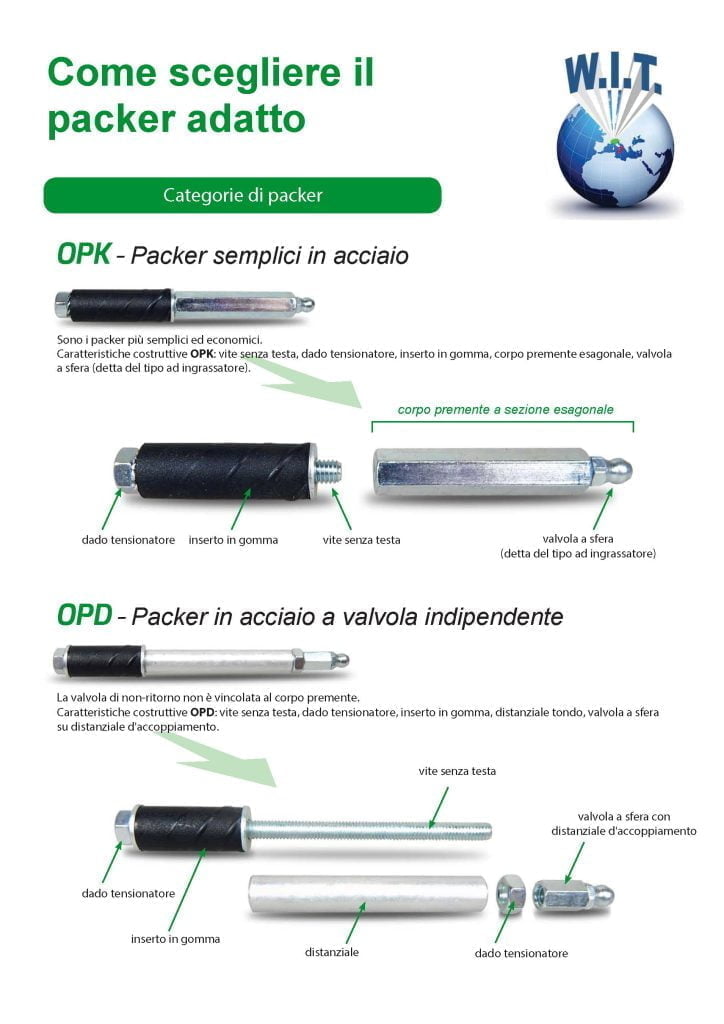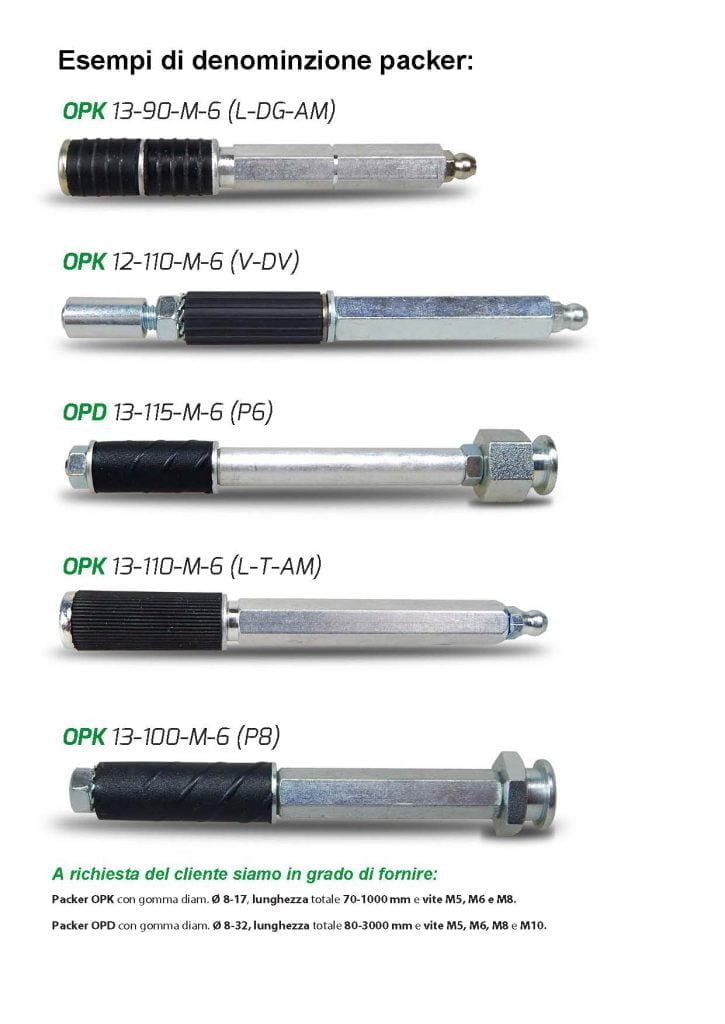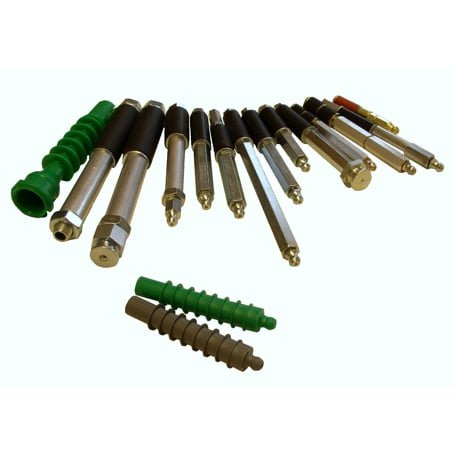“Resin injectors” called “packers” are tools used in building and construction to perform the injection of epoxy resin or similar materials inside cracks, crevices or cavities in a structure in order to strengthen or repair it. These injectors are commonly referred to as “packers” because they serve as connection or insertion devices for introducing the injection material into the structure.
Here is how packers generally work:
- Surface preparation: Before injectors are used, the surface of the crack or crevice must be prepared, often cleaned and degreased, to allow better adhesion of the injection material.
- Placement of packers: The packers, which are small tubes or bushings generally made of metal or plastic, are placed inside the cracks or crevices through holes drilled in the surface with the drill and a drill bit of the corresponding diameter. One side of the packer is attached to the surface, inside the hole, through the clamping grommets.
- Resin injection: After the packers are properly placed, epoxy resin or injection material is injected inside the cracks or crevices through the packers. This process can be carried out with the help of pumps and injection guns.
- Hardening and repair: Once the injection material has been injected, it hardens and solidifies, reinforcing or sealing the crack or crevice, depending on the needs of the project.
This process is often used for structural rehabilitation of buildings or for sealing cracks to prevent water or gas infiltration. Resin injectors, known as packers, play a key role in this process, enabling the precise and controlled injection of material into the slots.




